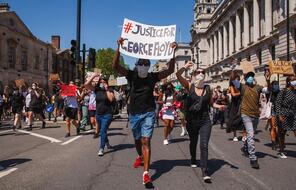
People's Assembly
Overview
About This Assessment
In this assessment, which lasts one fifty-minute lesson, students have the opportunity to participate in a People’s Assembly and share their responses to the question:
How might we challenge all types of racism in the UK so that everyone can thrive?
A People’s Assembly is a powerful process as it gives those participating the control, the responsibility and the opportunity to be active, respectful listeners. It can be a transformative experience: the prioritisation of active listening and inclusivity means that it gives people the chance to be listened to in a way that may not be the norm. This short dialogic process can help students gain confidence in themselves and can assist with community building: it encourages students to value everyone’s contributions and to work together to collectively decide on what they will share with others.
Procedure
Activities
Unlimited Access to Learning. More Added Every Month.
Facing History & Ourselves is designed for educators who want to help students explore identity, think critically, grow emotionally, act ethically, and participate in civic life. It’s hard work, so we’ve developed some go-to professional learning opportunities to help you along the way.
Exploring ELA Text Selection with Julia Torres
On-Demand

Working for Justice, Equity and Civic Agency in Our Schools: A Conversation with Clint Smith
On-Demand

Centering Student Voices to Build Community and Agency
On-Demand
















